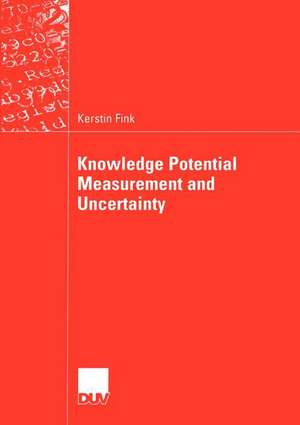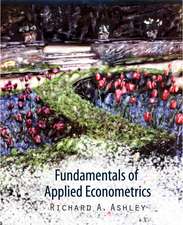Knowledge Potential Measurement and Uncertainty
Autor Kerstin Finken Limba Engleză Paperback – 29 iul 2004
Preț: 385.25 lei
Nou
Puncte Express: 578
Preț estimativ în valută:
73.72€ • 77.16$ • 61.36£
73.72€ • 77.16$ • 61.36£
Carte tipărită la comandă
Livrare economică 01-15 aprilie
Preluare comenzi: 021 569.72.76
Specificații
ISBN-13: 9783824421831
ISBN-10: 3824421836
Pagini: 292
Ilustrații: XVIII, 274 p. 11 illus.
Dimensiuni: 148 x 210 x 15 mm
Greutate: 0.35 kg
Ediția:Softcover reprint of the original 1st ed. 2004
Editura: Deutscher Universitätsverlag
Colecția Deutscher Universitätsverlag
Locul publicării:Wiesbaden, Germany
ISBN-10: 3824421836
Pagini: 292
Ilustrații: XVIII, 274 p. 11 illus.
Dimensiuni: 148 x 210 x 15 mm
Greutate: 0.35 kg
Ediția:Softcover reprint of the original 1st ed. 2004
Editura: Deutscher Universitätsverlag
Colecția Deutscher Universitätsverlag
Locul publicării:Wiesbaden, Germany
Public țintă
ResearchCuprins
1 Research Framework.- 1.1 Research Problem.- 1.2 Research Field and Research Question.- 1.3 Methodical Framework and Expected Results.- 1.4 Content Overview.- 2 Knowledge Measurement Approaches.- 2.1 Cognitive Science Approach.- 2.2 Management Measurement Approach.- 3 The Knowledge Potential View.- 4 Quantum Mechanics.- 4.1 Quantum Definition and Knowledge Quantum.- 4.2 History of Quantum Theory.- 4.3 Quantum Mechanical Concepts.- 4.4 The Uncertainty Principle.- 5 Knowledge Potential Measurement and Uncertainty.- 5.1 Analogical Reasoning.- 5.2 Knowledge Architecture.- 5.3 Questionnaire Design.- 5.4 Defining Momentum, Position, and Velocity.- 5.5 General Measurement Procedure of the Knowledge Potential.- 5.6 The Specific Measurement of the Knowledge Potential (KP).- 5.7 Skill Acquisition and Rating Scale for the Knowledge Worker.- 5.8 Measurement of the Uncertainty of the Knowledge-engineer.- 6 Case Studies for Knowledge Measurement.- 6.1 Case Study Design.- 6.2 Data Analysis.- 7 Key Research Results and Future Research Fields.- Appendices.- Appendix A: Questionnaire for the Head of the Company.- Appendix B: Questionnaire for the Knowledge Workers.- Appendix C: Heisenberg’s derivation of the Uncertainty Relation.- References.
Notă biografică
Univ.-Prof. Dr. Kerstin Fink lehrt Wirtschaftsinformatik an der Universität Innsbruck, wo sie sich auch habilitierte.
Textul de pe ultima copertă
Whereas the measurement of tangible assets, e.g. cost of sales or raw material, used to be one of the main issues of business in the past, the focus has now shifted towards intangible assets such as the knowledge potential of a firm's knowledge workers. Against this background, the measurement of knowledge has become a challenge for the managers of knowledge based companies and they are looking for a knowledge measurement model to achieve the optimal organization well-being.
Kerstin Fink discusses the two mainstream measurement fields: the cognitive science approach and the management approach. She develops the knowledge potential view which is determined by nine key measurement variables, i.e. content, culture, networking, organizational knowledge, learning and training, customer and competitor knowledge, and knowledge management systems. The author applies the analogical reasoning process and uses Werner Heisenberg's Uncertainty Principle as a framework for the employee knowledge potential measurement process. Her aim is to assign a specific knowledge classification or value to each employee. Case studies demonstrate the model's practical use.
Kerstin Fink discusses the two mainstream measurement fields: the cognitive science approach and the management approach. She develops the knowledge potential view which is determined by nine key measurement variables, i.e. content, culture, networking, organizational knowledge, learning and training, customer and competitor knowledge, and knowledge management systems. The author applies the analogical reasoning process and uses Werner Heisenberg's Uncertainty Principle as a framework for the employee knowledge potential measurement process. Her aim is to assign a specific knowledge classification or value to each employee. Case studies demonstrate the model's practical use.









